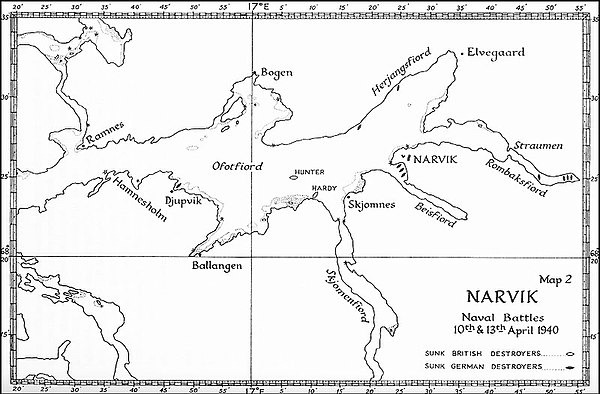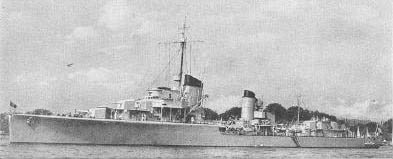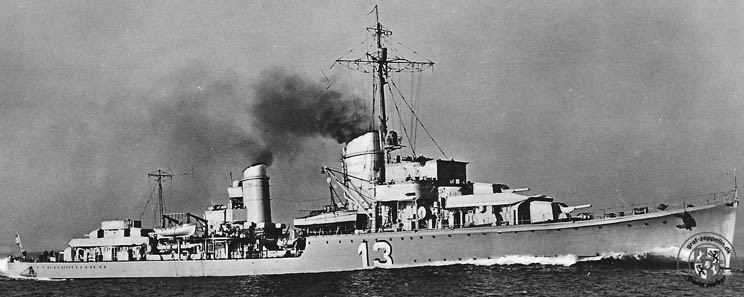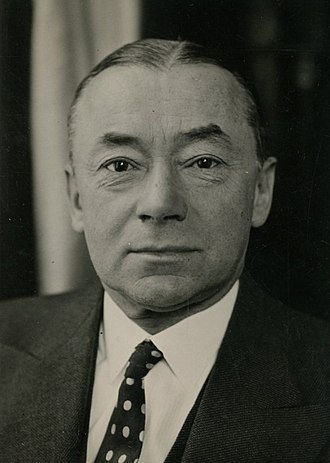Z2, You Sunk My Destroyer...
The DKM Z2 Georg Thiele isn't a household name, unless your household is in Northern Norway and your hobby is freaking freezing ass SCUBA diving.
What I love about this ship is what it says about German naval capabilities and the willingness of a madman to throw away such a wonderful ship and crew for such little gain.
It was a modern, 1934-class destroyer that had a solid plan. It was laid down in the mid 1930's and was launched in 1937, so it was barely passed its shake down when duty called.
First, it responded to the Memel crisis, where (in mid 1939) Hitler demanded Lithuania return the province of Memel (a former Prussian holding and excellent deep water port.) During the invasion of Poland, it was first employed as a ship to blockade the Polish coast. Later, it was moved to the North Sea to lay mines preventing a British invasion.
The Germans, relieved from the necessity to abide by the Versailles restrictions, looked at their destroyers as mini-cruisers and the Z class bristled with guns. Five 5 inch guns and a wealth of anti-aircraft armament as well. The Z2's carried a compliment of 16 torpedoes and around 60 depth charges. Additionally, they possessed a fairly modern hydrophone set for finding submarines.
The engines proved problematic, but could propel the ship at over 70 kph. The pressurized steam boilers were innovative, but maybe a bit too innovative.
Lucky Number 13 could dish it out, but she had no capability to take it. Completely unarmored, she really had to run and gun to stay safe.
Her captain was Max-Eckart Wolff (although she was named for a corvette captain.) Thiele was a hero of WWI when he died leading a torpedo attack during a mine laying foray into the Thames estuary. Wolff was later named the Admiral of the Destroyer sections and after the war became the first leader of the re-established German Navy.
But the international situation became very complicated very quickly. The Red Army had invaded Finland and Britain was determined to help, or at least wanted to help themselves to Swedish iron ore. Germany depended on Swedish iron ore and nickle and during the winter it had to be shipped overland to Narvik, in the north of Norway. There was a specially built railway to handle the trade in metal ore. The idea of defending Finnish sovereignty by attacking Norway and Sweden was not seen at all as hypocritical by the British because nothing ever is.
Germany feared the loss of these metals because they were crucial to German metal working for war production. Armor, good quality steel and alloys for production of hard shot were not available to Germany--except through trade with the Soviet Union or Sweden. So Germany was understandably nervous about the prospect of losing this valuable source.
In fact, the British were mining Norwegian waters, so there was no shortage of causes belli. Norway, desperately trying to maintain neutrality, had seized a couple of German refueling ships.
Hence, the hare-brained idea for Operation Weserubung. Norway assumed that it was going to be attacked by Britain. Germany actually had a strong incentive to have Norway and Sweden remain neutral. Vidkun Quisling, a man whose name became synonymous with traitorous opportunity seizing.
Admiral Raeder, possibly anxious to get the Kriegsmarine in the action, possibly just meddling, introduced Quisling to Hitler and the rest, as they say, is history. Quisling seized power. Hitler moved to help him out, transporting troops to seize the most important ports on the western coast of Norway, Bergen, Narvik, Stavanger and Trondheim.
The Thiele was assigned with two other destroyers to deliver the 130th Gebirgsjaeger Regiment (along with the headquarters of the 3rd GBJ Division) to Narvik. Interestingly, these were all Austrians. After delivering its charges, the Thiele exchanged gunfire with two Norwegian coastal defense ships (the Eidsvol and Norge), which were quickly overwhelmed.
Narvik itself surrendered rather easily, thanks in part to the pro-German commander, Col. Gustav Sundlo. Sundlo was later tried (and acquitted) of treason for giving in so easily.
 Eventually, ten German destroyers would arrive at Narvik waiting to be refueled and re-provisioned. However, only one of the fuel ships that had been seized by the Norwegians had arrived at the port. Two others had been sunk or scuttled after being intercepted. The German destroyers, therefore, lacked the fuel (and in some cases armaments, having expended 8 torpedoes to sink two ancient coastal defense ships) to return to Germany.
Eventually, ten German destroyers would arrive at Narvik waiting to be refueled and re-provisioned. However, only one of the fuel ships that had been seized by the Norwegians had arrived at the port. Two others had been sunk or scuttled after being intercepted. The German destroyers, therefore, lacked the fuel (and in some cases armaments, having expended 8 torpedoes to sink two ancient coastal defense ships) to return to Germany.
Meanwhile, the British arrived, sealing the fjord to the sea. At first, with the Admiral Hipper, Gneisenau and Scharnhorst at sea, the British were outgunned. But the Germans could not leave these valuable capital ships in the way of the Royal Navy as it began to concentrate.
Finally, a force of five British destroyers (Hardy, Hotspur, Havock, Hunter and Hostile) approached Narvik and sunk all the merchant ships therein, including six German, two Swedish, two Norwegian and a British. However, the three German destroyers (including the Thiele) that had already refueled ambushed the British and the Thiele led the way, sinking the Hardy and Hunter and severely damaging Hotspur. The remaining British destroyers made for home, but managed to damage the Thiele pretty severely.
Nevertheless, another wave of destroyer attacks by the British allowed the Thiele to damage the Eskimo. However, by this time Germans had started running out of ammunition (most importantly, torpedo reloads) and German fuel and ammunition ships were being sunk or captured on their way to Narvik, so there was no prospect of survival. The Thiele fought literally to the death, forcing her to beach in order to save her crew. Capt. Wolff was awarded the Knight's Cross, but the Thiele (along with 50% of Germany's total destroyer force.)
But this is where the ASL story begins.
The sailors of the Thiele, along with other sailors of German destroyers, were formed into Marine Regiment Berger and would act as infantry in the land campaign.
One could not be blamed for thinking that given the importance of the Narvik campaign and the large volume of literature on the subject that there would be a large number of scenarios at Narvik. But no, there is only one.
I wrote The Defiance of the Narvik Military Academy at least 25 years ago and I don't have a copy (background: I got really sick fourteen years ago and wasn't expected to live very long. My ex put my ASL stuff in storage and then quit paying the bill. All was lost.) It is the only Narvik scenario available listed at the ASL Scenario Archive.
Narvik really has everything. Marines. Paratroopers. Alpine troops. Sailors. British. French. Norwegians. Keep in mind, that aside from the Soviet Union, the Norwegians held out longer than ANY other Allied country actually invaded by Germany.
Let's put a little political context in as well. Narvik became the theatre of choice for French President Paul Reynaud.
Reynaud saw Norway as a chance to conduct the war ANYWHERE other than Northern France. The French sent the Chausseurs Alpines, their elite mountain division--at the expense of the defenses against Italy, which was not in the war yet--to fight in a climate for which they were ideally suited.
The British saw the North Sea as their own private lake and were loathe to give up the Norwegian cost to a wealth of Uboat bases and naval bomber airfields.
It was only the disaster in France that brought the Narvik campaign to a close, forcing the allies to tuck tails and leave Scandinavia and never return.
Bibliography
So there should be more scenarios here.
So I made one!
What I love about this ship is what it says about German naval capabilities and the willingness of a madman to throw away such a wonderful ship and crew for such little gain.
It was a modern, 1934-class destroyer that had a solid plan. It was laid down in the mid 1930's and was launched in 1937, so it was barely passed its shake down when duty called.
First, it responded to the Memel crisis, where (in mid 1939) Hitler demanded Lithuania return the province of Memel (a former Prussian holding and excellent deep water port.) During the invasion of Poland, it was first employed as a ship to blockade the Polish coast. Later, it was moved to the North Sea to lay mines preventing a British invasion.
The Germans, relieved from the necessity to abide by the Versailles restrictions, looked at their destroyers as mini-cruisers and the Z class bristled with guns. Five 5 inch guns and a wealth of anti-aircraft armament as well. The Z2's carried a compliment of 16 torpedoes and around 60 depth charges. Additionally, they possessed a fairly modern hydrophone set for finding submarines.
The engines proved problematic, but could propel the ship at over 70 kph. The pressurized steam boilers were innovative, but maybe a bit too innovative.
Lucky Number 13 could dish it out, but she had no capability to take it. Completely unarmored, she really had to run and gun to stay safe.
Her captain was Max-Eckart Wolff (although she was named for a corvette captain.) Thiele was a hero of WWI when he died leading a torpedo attack during a mine laying foray into the Thames estuary. Wolff was later named the Admiral of the Destroyer sections and after the war became the first leader of the re-established German Navy.
But the international situation became very complicated very quickly. The Red Army had invaded Finland and Britain was determined to help, or at least wanted to help themselves to Swedish iron ore. Germany depended on Swedish iron ore and nickle and during the winter it had to be shipped overland to Narvik, in the north of Norway. There was a specially built railway to handle the trade in metal ore. The idea of defending Finnish sovereignty by attacking Norway and Sweden was not seen at all as hypocritical by the British because nothing ever is.
Germany feared the loss of these metals because they were crucial to German metal working for war production. Armor, good quality steel and alloys for production of hard shot were not available to Germany--except through trade with the Soviet Union or Sweden. So Germany was understandably nervous about the prospect of losing this valuable source.
In fact, the British were mining Norwegian waters, so there was no shortage of causes belli. Norway, desperately trying to maintain neutrality, had seized a couple of German refueling ships.
Hence, the hare-brained idea for Operation Weserubung. Norway assumed that it was going to be attacked by Britain. Germany actually had a strong incentive to have Norway and Sweden remain neutral. Vidkun Quisling, a man whose name became synonymous with traitorous opportunity seizing.
Admiral Raeder, possibly anxious to get the Kriegsmarine in the action, possibly just meddling, introduced Quisling to Hitler and the rest, as they say, is history. Quisling seized power. Hitler moved to help him out, transporting troops to seize the most important ports on the western coast of Norway, Bergen, Narvik, Stavanger and Trondheim.
The Thiele was assigned with two other destroyers to deliver the 130th Gebirgsjaeger Regiment (along with the headquarters of the 3rd GBJ Division) to Narvik. Interestingly, these were all Austrians. After delivering its charges, the Thiele exchanged gunfire with two Norwegian coastal defense ships (the Eidsvol and Norge), which were quickly overwhelmed.
Narvik itself surrendered rather easily, thanks in part to the pro-German commander, Col. Gustav Sundlo. Sundlo was later tried (and acquitted) of treason for giving in so easily.

Meanwhile, the British arrived, sealing the fjord to the sea. At first, with the Admiral Hipper, Gneisenau and Scharnhorst at sea, the British were outgunned. But the Germans could not leave these valuable capital ships in the way of the Royal Navy as it began to concentrate.
Finally, a force of five British destroyers (Hardy, Hotspur, Havock, Hunter and Hostile) approached Narvik and sunk all the merchant ships therein, including six German, two Swedish, two Norwegian and a British. However, the three German destroyers (including the Thiele) that had already refueled ambushed the British and the Thiele led the way, sinking the Hardy and Hunter and severely damaging Hotspur. The remaining British destroyers made for home, but managed to damage the Thiele pretty severely.
Nevertheless, another wave of destroyer attacks by the British allowed the Thiele to damage the Eskimo. However, by this time Germans had started running out of ammunition (most importantly, torpedo reloads) and German fuel and ammunition ships were being sunk or captured on their way to Narvik, so there was no prospect of survival. The Thiele fought literally to the death, forcing her to beach in order to save her crew. Capt. Wolff was awarded the Knight's Cross, but the Thiele (along with 50% of Germany's total destroyer force.)
 |
| The remains of the Thiele today in Narvik harbor. |
The sailors of the Thiele, along with other sailors of German destroyers, were formed into Marine Regiment Berger and would act as infantry in the land campaign.
One could not be blamed for thinking that given the importance of the Narvik campaign and the large volume of literature on the subject that there would be a large number of scenarios at Narvik. But no, there is only one.
I wrote The Defiance of the Narvik Military Academy at least 25 years ago and I don't have a copy (background: I got really sick fourteen years ago and wasn't expected to live very long. My ex put my ASL stuff in storage and then quit paying the bill. All was lost.) It is the only Narvik scenario available listed at the ASL Scenario Archive.
Narvik really has everything. Marines. Paratroopers. Alpine troops. Sailors. British. French. Norwegians. Keep in mind, that aside from the Soviet Union, the Norwegians held out longer than ANY other Allied country actually invaded by Germany.
Let's put a little political context in as well. Narvik became the theatre of choice for French President Paul Reynaud.
Reynaud saw Norway as a chance to conduct the war ANYWHERE other than Northern France. The French sent the Chausseurs Alpines, their elite mountain division--at the expense of the defenses against Italy, which was not in the war yet--to fight in a climate for which they were ideally suited.
The British saw the North Sea as their own private lake and were loathe to give up the Norwegian cost to a wealth of Uboat bases and naval bomber airfields.
It was only the disaster in France that brought the Narvik campaign to a close, forcing the allies to tuck tails and leave Scandinavia and never return.
Bibliography
 |
| John Kiszely was with the Scots Guards in the Falklands. |
 |
| Niall Cherry |
 |
| MJ Pearce, Robert Porter |
So I made one!
Fight for the FjordFight for the Fjord
Fight for the Fjords Scenario Set Up File. *Right click to download.
Enjoy!









Comments
7: The Defiance of the Narvik Military Academy
May 8th, 1940. Outskirts of Narvik, Norway. The cadets of Narvik Military
Academy have proved to be rather obstinant in their defense. After several
assaults of the heights overlooking Narvik and the Academy, the cadets withdrew
and reinforced the campus below. German High Command was infuriated in the
delays these "children" were causing, and dispatched elements of the 16th Heavy
Weapons Battalion to support the assault on the Academy and capture of the
bridge. The cadets dug in and prayed for reinforcements from the Norwegian
Army. Just as the German assault was to start, a lone gun, borrowed from the
BEF, opened up from across the foggy river to get the Germans off on the wrong
foot.
VICTORY CONDITIONS: Germans must control 5 of 6 multi-story Buildings on the
South edge of Board 8, and there can be no good order Norwegian MMC within
normal range (infantry not SW) to the bridge from any hex on the South side of
the river. A DRAW occurs if only one of the two victory conditions is met.
TURNS: 5, Norwegians setup first and "move" first per SSR 3.
BOARDS: Bd 8 West (8 in center(folded in half) North), Bd 2 East (2 in SW
corner) Hexes rows A-P incl. Any half-hex which has two terrains at
border of Bd 8 and Bd 2 is considered the non-open ground for TEM, etc.
It is considered as drawn for LOS purposes.
Norwegian forces: Remnants of the Narvik Military Academy Corp of Cadets (ELR 3
SAN 3) setup anywhere South of River and North of Road 2P1-2I2-2A5.
2x4-5-7, 6x4-3-7, 10-2, 7-0, 1xHmg, 1xLmg, 3xWire, 3xFortified Building
Locations, 4x?; Borrowed Artillery from the BEF sets up in hex 8O8:
1x2-2-8, 1x88ART(British); Elements of the 2nd Norwegian Mechanized
Company enter mounted on motorcycles on Turn 3 at hex 8I10: 3x4-5-8
1xLmg 9-1 3xMotorcycles.
Germans forces: Combined Assault Group from the 1st Pioneer Battalion, the 16th
Heavy Weapons Battalion, and the 3rd Army Group (ELR 3 SAN 3);Setup on
Board 2 Level 3: 2x2-2-8, 1x150* INF Gun, 1x75* INF Gun. Setup South of
road 2P1-2I2-2A5: 2x8-3-8 2xDC +
Bid from 12x4-6-7 to 5x4-6-7 by HS with the following Ldrs/SWs:
n 12x4-6-7 1xMmg 2xLtm 9-1 8-1 8-0 7-0.
n 9x4-6-7 remove 1xLmg 1xLtm 1x8-1.
n 7x4-6-7 remove 1xMmg.
n 5x4-6-7 remove 1x9-1, add 8-1.
SSRs.
1. EC is wet. +2 Fog at Level 1 exists, mild breeze from the South at
start, river is deep, current is strong.
2. Only Hexes A-P on both boards are playable. A 2-Lane Stone Bridge
exists from 8I9 to 8I4 inclusive, Hex 2M4 is open ground. The Bridge
cannot be rubbled.
3. As the sole action of the Norwegian Turn 1, the 88ART may fire in the
Advance Fire Phase only as opportunity fire at any non-fog location.
4. Motorcyclists must exit South side of Bridge before counting as part of
the victory conditions.